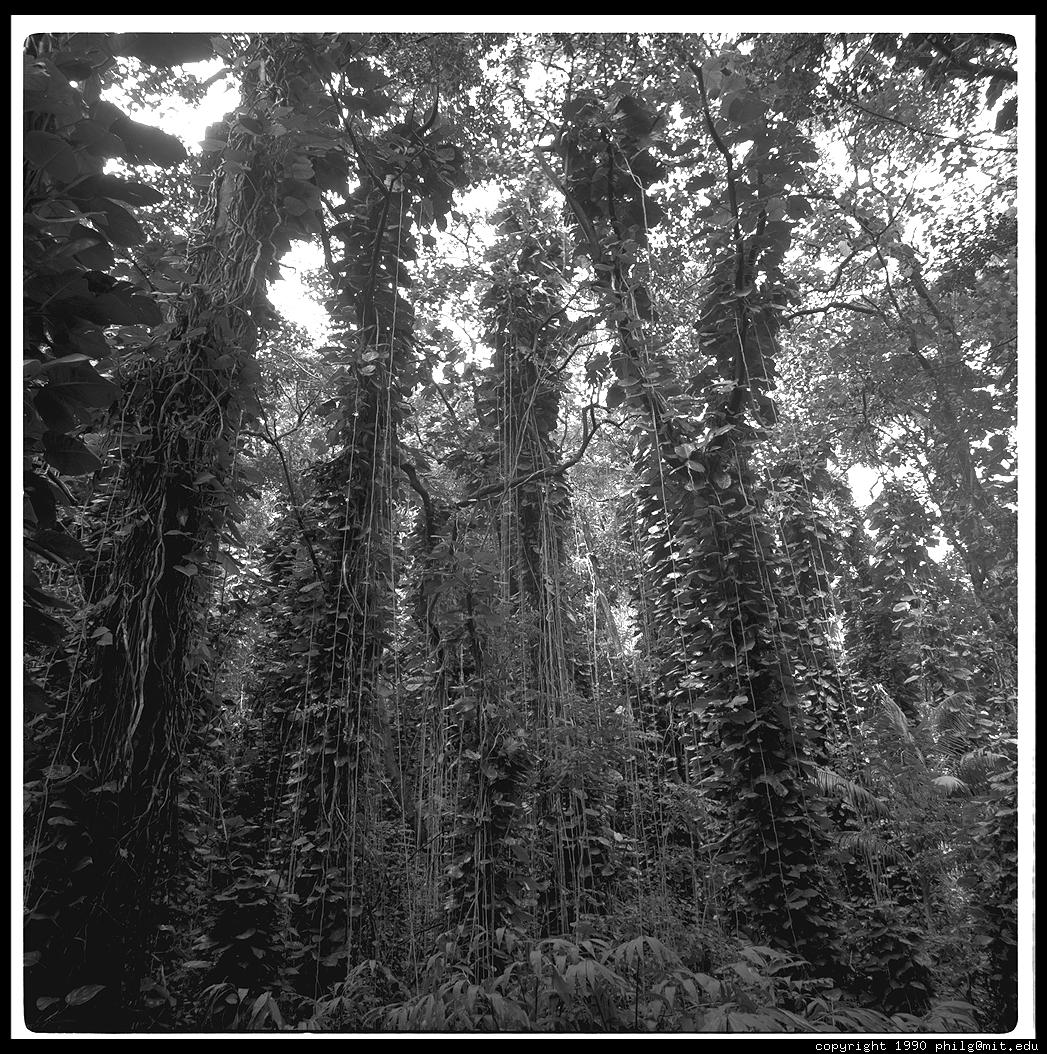
At first, this image seems to be a mess of lines and tone. The vines hanging from the tops of the trees drag the eyes down while, at the same time, the vantage point of the image directs the eyes up, following the trunks of the tree. The image was taken looking up, which is why our eyes follow the trunks; however, once they reach the top, the thin vines (without any markers of depth) drag them back down. The flatness of this picture allows for this contradiction, for the up and down movement our eyes make. Because the image is flat rather than three dimensional, the illusion of depth (or lack of depth as portrayed by the vines) can exist. In this way, the image is "solved" rather than composed. From another vantage point, the images would just be flat trees without any kind of interesting directional movement of the eyes (such as the up and down contradiction created here).

At first the eye is drawn to the people in the image. They're the main focus of the image, and they're dressed funny. In the foreground of the image is a camera, framing the people. While the camera is not quite in focus and the function is more of a framing nature, the camera is important. We see that the man is positioning the people and that (because the camera is there) he is a photographer. This makes the image he is about to take much more deliberate than perhaps the subject (what seems to be members of some kind of native tribe) should be. The size of the camera suggests it's importance and perhaps what the meaning the photographer is trying to get across.
No comments:
Post a Comment